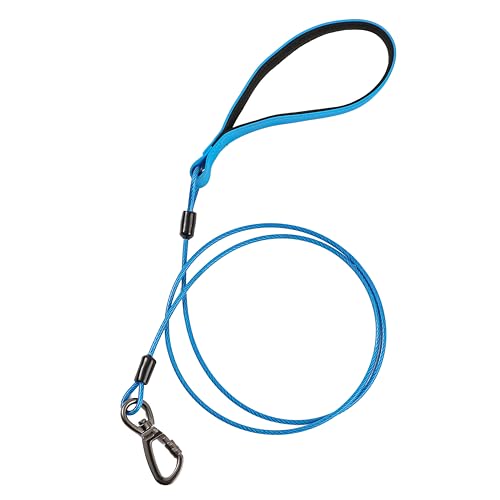




Begin with a high-value treat that captures attention instantly. When the canine is focused, take a few steps forward while keeping the reward close to your side. This encourages proximity and positive association with staying near you.
Consistency is key. Each time the four-legged companion wanders away, gently redirect them back to the desired position. Use a cheerful tone and give praise when they return to the correct spot. This reinforces the behaviour while making the experience enjoyable.
For the first few sessions, choose quiet environments with minimal distractions. Gradually introduce more stimulating surroundings as proficiency improves. This approach helps build confidence and reliability, ensuring that the furry friend stays close regardless of the setting.
Incorporate regular practice into daily routines. Short, frequent sessions yield better results than occasional long ones. Aim for five to ten minutes, focusing on maintaining attention and rewarding positive behaviour at every opportunity.
Utilise leash techniques that prevent pulling. A harness may provide better control, allowing for a more comfortable experience. Experiment with different equipment to find what works best for both of you, enhancing the bond between human and companion.
Lastly, patience is crucial. Progress may seem slow at times, but celebrating small victories makes the process enjoyable. Each step taken together strengthens the connection and builds trust, creating a harmonious partnership for years to come.
Understanding the Heel Command and Its Importance
The heel command establishes a strong connection between handler and canine, fostering a sense of teamwork. This skill is not just about keeping the animal close but also ensuring safety during outings. A well-executed heel means the companion stays beside, reducing the likelihood of distractions or unwanted behaviours.
Benefits of Mastering the Heel Command
One key advantage is improved control in public settings. A pet that understands the prompt can navigate crowded areas without pulling or dragging. This not only enhances the experience for both parties but also shows respect towards others. Furthermore, mastering this skill can lead to more enjoyable adventures, as the animal becomes more engaged and responsive.
Building a Strong Foundation
Consistency is paramount. Frequent practice sessions, even if brief, reinforce the behaviour. Using positive reinforcement, such as treats or praise, creates a solid association with the action. Additionally, choosing a specific cue word helps in establishing clarity. Over time, the animal begins to anticipate the command, leading to a more natural response.
Encouraging focus through eye contact during training sessions can also strengthen the bond. Celebrating small victories along the way fosters enthusiasm, making future sessions more productive and enjoyable. Each successful attempt builds confidence, leading to mastery of this crucial skill.
Choosing the Right Equipment for Training
Selecting appropriate gear significantly impacts the success of an education process. Here are some key items to consider:
- Collars: Opt for a flat collar made of durable material. Avoid choke chains and prong collars, as these can cause discomfort and fear.
- Leashes: A standard six-foot leash is ideal for maintaining control while allowing freedom of movement. Retractable leashes can create confusion and should be avoided during initial sessions.
- Harnesses: Consider a front-clip harness for better control. This type discourages pulling and encourages the animal to focus on the handler.
- Treat Pouch: A convenient treat pouch keeps rewards within reach. Choose one that can attach to a belt or waistband for easy access during training.
- Clicker: Incorporating a clicker can enhance communication. The sound signifies a job well done, reinforcing positive behaviour quickly.
Personal experience revealed the value of quality equipment. During early sessions with my first companion, a sturdy collar and leash made a noticeable difference. The right harness, introduced later, transformed our outings from chaotic to controlled.
Always ensure that the gear fits properly. A loose collar can slip off, while a tight one can cause discomfort. Regular checks are necessary as growth and changes in weight can affect fit.
Investing in suitable tools not only aids in the learning process but also fosters a positive relationship. Comfort and safety should remain priorities throughout the experience.
Step-by-Step Techniques for Teaching Heel
Begin with the pup in a quiet area free from distractions. Hold treats in the left hand, keeping them close to the side. Position the animal in a sitting stance on the left side, ready for movement. Use a cue like “heel” while stepping forward, encouraging the companion to follow alongside.
Every few steps, offer a treat when the furry friend remains close. This reinforces the behaviour. If the canine strays ahead or lags behind, gently pull the lead and redirect them back to the desired position. Consistency is key; practice short sessions daily for better results.
Incorporating Turns and Stops
Introduce turns and halts to reinforce the command further. While moving, make a quick turn to the left or right. This teaches the animal to anticipate changes and adjust accordingly. When halting, ensure to stop abruptly and reward when the companion sits or stays beside. This builds a strong association between stopping and good behaviour.
Gradual Exposure to Distractions
Once the basics are solid, slowly introduce distractions. Begin in a busier area, maintaining focus with treats and praise when the furry one stays close despite temptations. This step is crucial for real-world application. Progressively increase the level of distraction, allowing for short breaks if needed. Patience during this phase fosters confidence and reliability.
Common Challenges and Solutions During Training
One major hurdle encountered is distractions from the environment. Sights, sounds, or even smells can divert attention. Begin training in a quiet space, gradually introducing distractions as progress is made. This controlled exposure helps reinforce focus.
Pulling on the leash is another frequent issue. A sudden tug can lead to frustration. Instead, consider using a no-pull harness to discourage this behaviour. Combine it with consistent commands to redirect attention and maintain a steady pace.
Inconsistency in commands can confuse a canine companion. Ensure that everyone involved uses the same verbal cues and gestures. Consistency builds understanding, reinforcing the desired behaviour over time.
Patience is paramount. Some pets may take longer to grasp the concept. Break sessions into shorter, engaging segments to maintain interest. Positive reinforcement, like treats or praise, can motivate and encourage persistence.
Physical conditioning plays a role too. If a companion lacks stamina, they may become easily distracted. Regular exercise and a balanced diet, such as the best dog food for brussels griffon, can enhance overall focus and energy levels during lessons.
Finally, fear or anxiety can hinder progress. If a canine appears nervous, evaluate the training environment. Create a calm atmosphere, allowing for gradual exposure to new settings. Building confidence through positive experiences fosters a more receptive learner.







